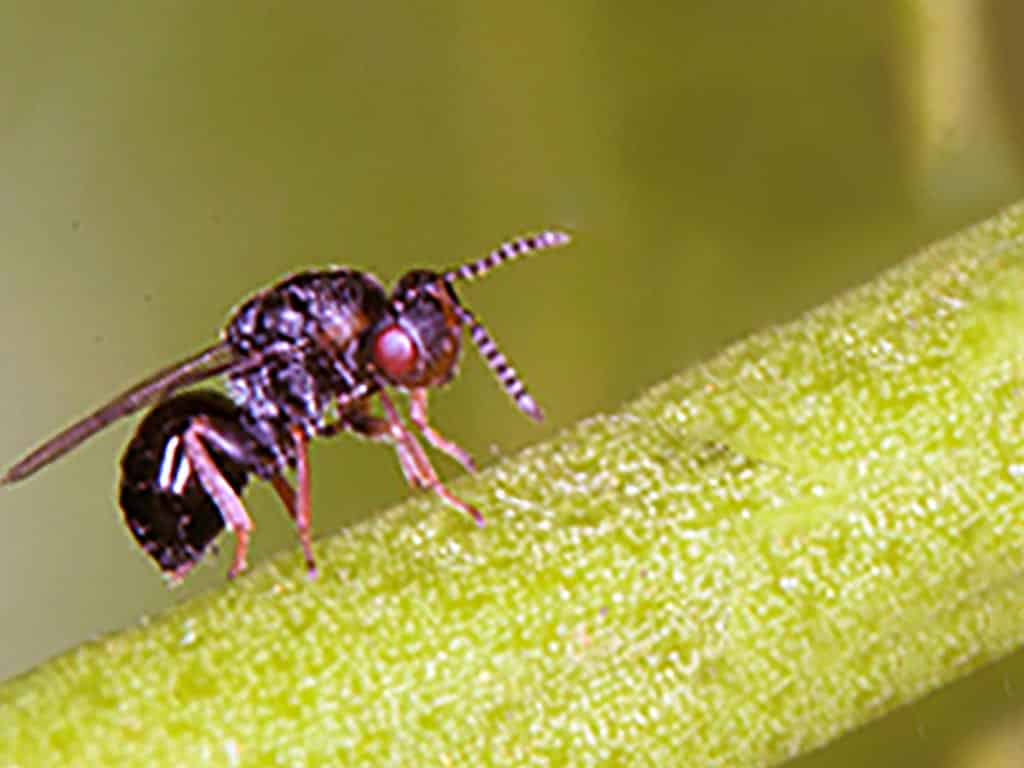It is best to remove the galls as soon as they are noticed. If there are holes in the galls then the wasps have already emerged. The tree may need to be cut back quite hard if there are a lot of galls and if they are causing the tree problems.They are difficult to control but the following methods are worth a try.
- Limit the use of high-nitrogen fertilizer in spring as this will produce an abundance of new growth in a short space of time which will attract the wasp. Instead, add fertilizer late summer, late autumn and mid- winter.
- Protect the new growth with neem or other oil spray- may deter the female from laying eggs.
- They are attracted to yellow, so sticky paper traps around the tree in late winter may catch some. Be careful not to leave them there too long as they will also catch beneficial bugs.
- If there are no holes in the galls then the wasps are still inside and removing these will reduce next year’s population. However, if the galls have holes in them, then the wasps have emerged and cutting off the gall will not help.
- As the larvae spend a few months feeding within the plant, a neem drench around the plant during autumn and winter, prior to the wasp laying its eggs, may have some effect.

